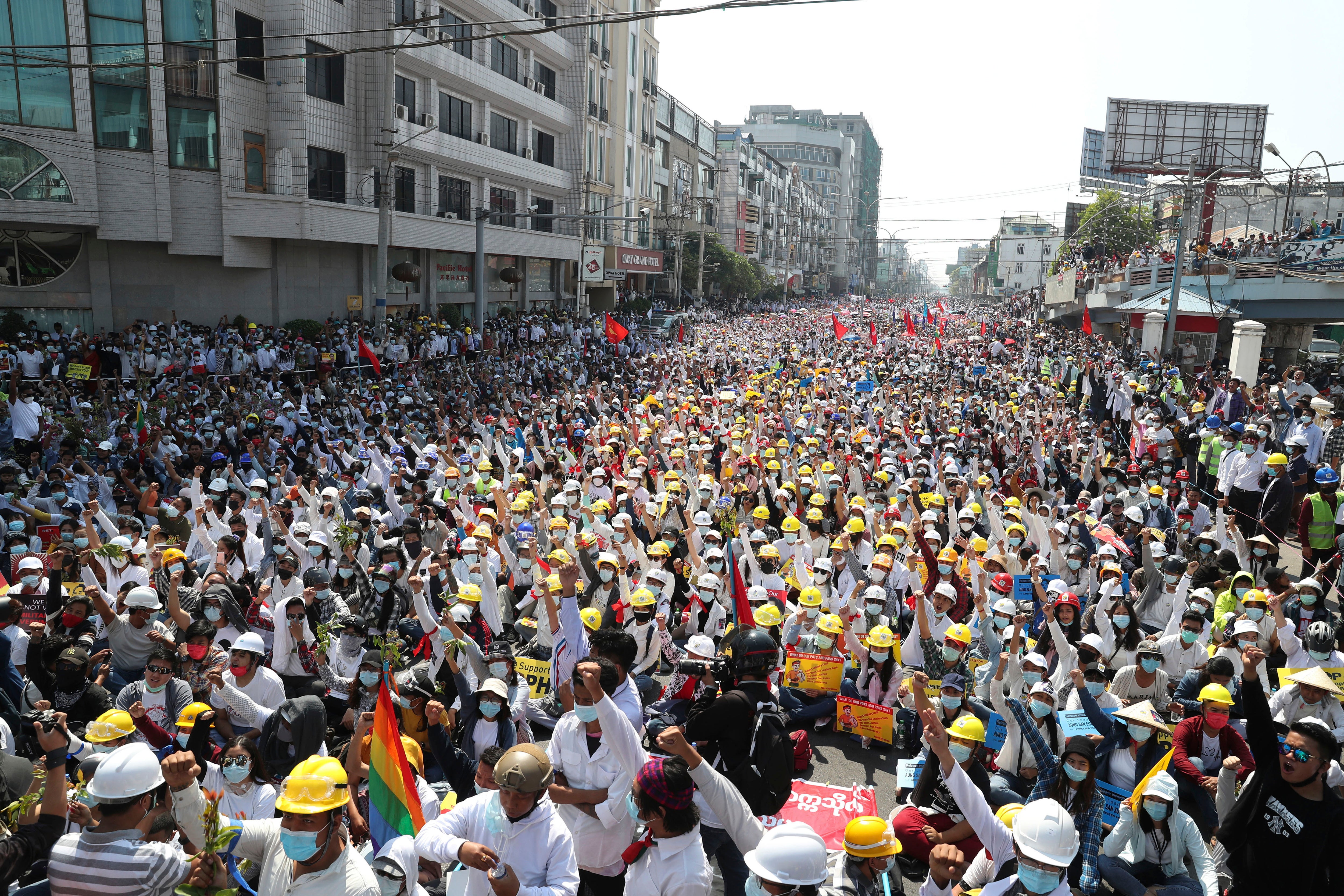AP PHOTOS: 1 month in Myanmar under military control

Your support helps us to tell the story
From reproductive rights to climate change to Big Tech, The Independent is on the ground when the story is developing. Whether it's investigating the financials of Elon Musk's pro-Trump PAC or producing our latest documentary, 'The A Word', which shines a light on the American women fighting for reproductive rights, we know how important it is to parse out the facts from the messaging.
At such a critical moment in US history, we need reporters on the ground. Your donation allows us to keep sending journalists to speak to both sides of the story.
The Independent is trusted by Americans across the entire political spectrum. And unlike many other quality news outlets, we choose not to lock Americans out of our reporting and analysis with paywalls. We believe quality journalism should be available to everyone, paid for by those who can afford it.
Your support makes all the difference.The hopes of building a robust democracy in Myanmar were shattered when the powerful military toppled the elected government of Aung San Suu Kyi and her National League for Democracy party in a coup Feb. 1.
In the month since, the mass protests occurring each day are a sharp reminder of the long and bloody struggle for democracy in a country where the military ruled directly for more than five decades.
In clinging to power, the army used lethal force to quash a massive 1988 uprising and a 2007 revolt led by Buddhist monks. Even as it eased the reins — allowing civilian rule after Suu Kyi's party won elections in 2015 — the military retained power through a constitution it drafted.
When the army blocked Parliament from convening and detained Suu Kyi and others in her government the day of its takeover, it alleged the most recent election was tainted by fraud. The election commission that refuted those allegations and affirmed Suu Kyi's party won in a landslide was purged by the ruling junta.
The public at large also rejected the military’s assertion — and took to the streets. Medical workers spearheaded a Civil Disobedience Movement, whose calls for mass non-violent protests were met across the country. Even in smaller cities, crowds often in the tens of thousands defied the junta's orders against large gatherings.
Those united in opposing the coup and wanting Suu Kyi released and restored to power came from varied walks of life. Civil servants and workers at enterprises such as the state railway. Enthusiastic youngsters in Generation Z. Members of Myanmar's myriad ethnic groups.
As the protests have intensified so too has the response from security forces, with hundreds of arrests and several deaths of protesters reported this past weekend.